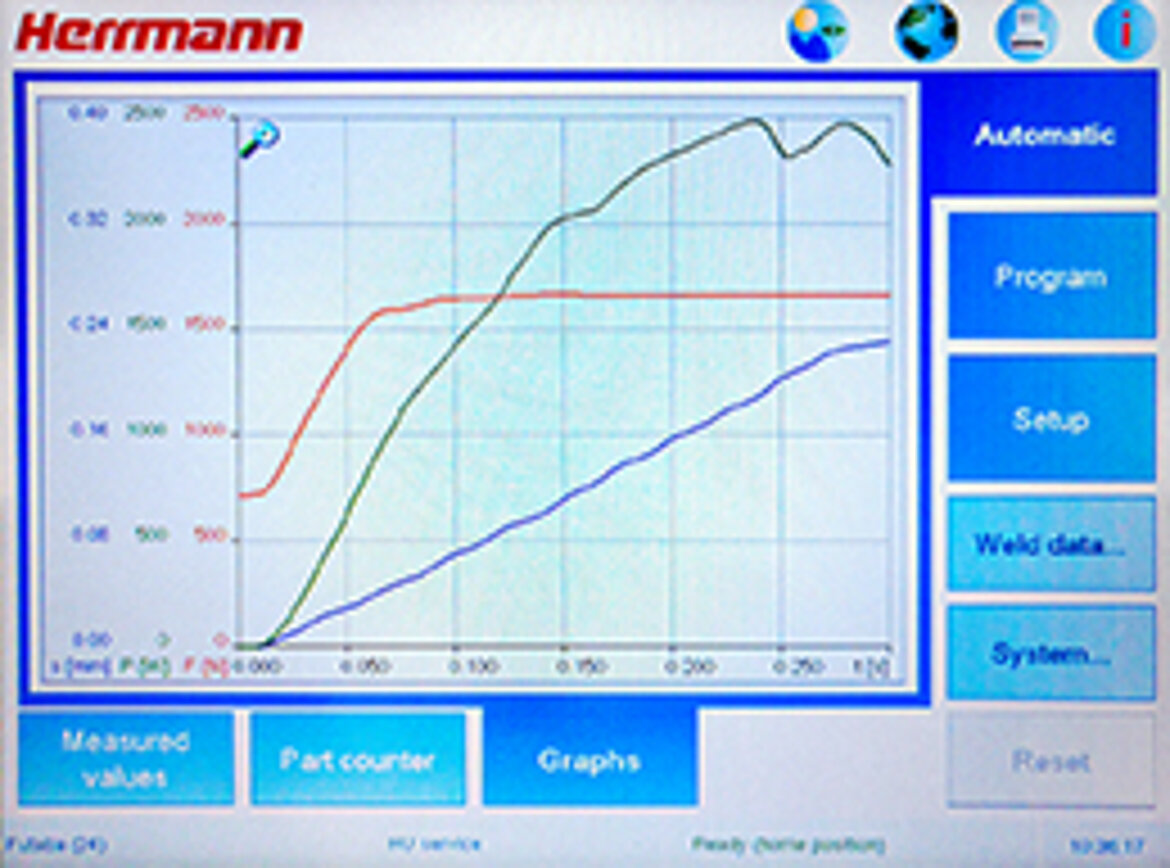Ultrasonic welding of non-ferrous metals

Visualization for a stable process
Herrmann Ultraschall has been a specialist in ultrasonic welding for decades and is presenting its new HiS VARIO welding system for metal welding such as copper and aluminum at Productronica. The system can be used as a manual workstation or automatically integrated into production lines.
When welding metals, the process stability and the life span of the welding tools play a major role. For the process set-up, the application, the material and the production environment will have to be taken into account. For each application, optimal process parameters and the associated process windows are determined in order to ensure consistently high production quality. Often it is also necessary to compensate for certain material and finishing tolerances.
Display and optimize process graphics via screen
The accuracy of the welding process has been a priority at Herrmann Ultraschall for decades. This is the only way to understand, optimize and monitor the joining process. The system control VARIO generates a graphical representation of the time course of all relevant process variables such as power, joining distance, force, amplitude and frequency - with a very high resolution of one measured value per millisecond. The curves document the characteristics of the weld process and thus enable parameter optimization. These can then be displayed as reference graphics and used for quality assessment. Herrmann Ultraschall sees great opportunities in a finely tuned parameterization supported by process visualization to further develop the welding quality and the service life of the sonotrodes.
Ultrasonic metal welding basics:
Ultrasonic welding of non-ferrous metals such as copper and aluminum is an established joining technology and is suitable for many electrical connections in the automotive, consumer and electronics industries. In addition to typical terminal and cable connections, the use of ultrasonic welding has also greatly increased in the production of anode and cathode due to the increasing demand for lithium-ion batteries.
The advantages of ultrasonic welding are:
■ High strength
■ Short welding times
■ Low energy consumption
■ No consumables
-
Battery industry applications
-
Visit us at Productronica Hall A5 - Stand 171

